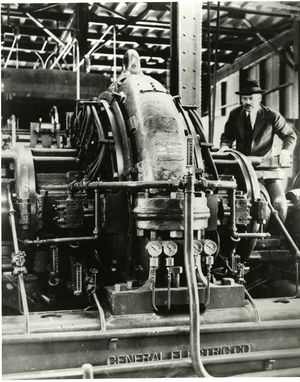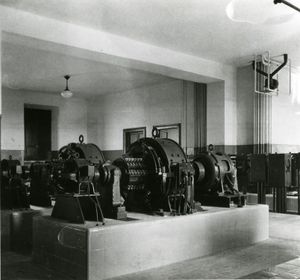Ernst F. W. Alexanderson
- Birthdate
- 1878
- Birthplace
- Uppsala, Sweden
- Death date
- 1975
- Associated organizations
- General Electric (GE), RCA (Radio Corporation of America)
- Fields of study
- Power
1921
Ernst F. W. Alexanderson, IRE President, 1921, invented a self-exciting alternator. He also designed a series of high-frequency alternators for radio use.
Biography
Ernst Alexanderson was born in 1878 in Uppsala, Sweden, and graduated in engineering at the Royal Technical University in Stockholm in 1900. He spent a year taking advanced studies in electrical engineering in Germany before coming to the United States. He worked for a few months as a draftsman for the C&C Electric Company in New Jersey before joining the General Electric Company (GE) in Schenectady, NY, in 1902. One of his first inventions was a self-exciting alternator which was the subject of a paper published by the American Institute of Electrical Engineers (AIEE) in 1906. Subsequently, he devised a modified repulsion motor for electric railway use, which he described in a 1908 AIEE paper.

Beginning in 1904, Alexanderson designed a series of high-frequency alternators for use in radio as sources of transmitter power which provided an alternative to spark and arc transmitters. One of his early radio alternators was employed by Reginald Fessenden for experiments with voice and music broadcasts from a station in Brant Rock, MA, in December 1906. A later and higher-powered radio alternator capable of 50 kW output designed by Alexanderson was installed in New Brunswick, NJ, in 1917 and used for transatlantic communication during World War I. The first of several 200-kW Alexanderson radio alternators was located at the New Brunswick station in 1918 and served as the prototype for a long-wave radio network established by the Radio Corporation of America (RCA) following its formation in 1919. Alexanderson served as the first chief engineer at RCA and divided his time between RCA and GE for several years. He became the second recipient of the IRE Medal of Honor in 1919 in recognition of his contributions to global radio communication. He was president of the IRE during 1921.
In August 1920 Alexanderson published a paper in the Proceedings of the IRE, where he noted that it already had "become generally known that a new highway for world traffic has been opened up through the development of transatlantic radio communication." He commented that the most suitable band for transatlantic radio traffic was at wavelengths ranging from 10 to 20 km and this would provide room for only about 12 "first class transmitting stations." He defined a first class station as one with enough power so that its messages could be "received in all parts of the world." He suggested that increasing transmitting speed, more directive antennas, and somewhat closer spacing of signal frequencies were ways to increase radio traffic in the optimum band. He provided some technical information on the 200-kW radio alternator, the magnetic amplifier, and a multiple antenna which were key elements of his long-wave system.
During the late 1920's and the 1930's, Alexanderson investigated short-wave propagation, radio facsimile, mechanical-scan television, and radio altimeters. He demonstrated television in the home in 1927 using a rotating disk type receiver. He also studied and made inventions relating to electronic power conversion, direct-current power transmission, and gun-control systems. During World War II, he worked on analog computers for use with radar and developed military applications of the amplidyne. He received the Edison Medal of the AIEE in 1944.
Alexanderson retired from GE in 1948 although he continued as a consultant to the company for several more years. His numerous inventions and other achievements gained him recognition as one of the most outstanding members of the electrical engineering profession during a career of over a half century. He received more than 340 United States patents, with the final one issued when he was 95. Alexanderson died in 1975 at age 97.

